Three essential herbs form the backbone of Japanese tea ceremony rituals: matcha, gyokuro, and sencha. Matcha, the star of Chanoyu, is a finely ground green tea powder whisked to frothy perfection. It symbolizes harmony, respect, purity, and tranquility. Gyokuro, a shade-grown green tea, offers a sweet and umami-rich flavor profile. It's prepared with cooler water to preserve its delicate taste. Sencha, the everyday ceremony staple, boasts a bright, vegetal flavor and is central to Japanese tea culture. Each herb brings unique qualities to the ceremony, inviting you to explore the depth of Japanese tea traditions.
Matcha: The Star of Chanoyu

While many herbs play a role in the Japanese tea ceremony, matcha stands out as the undisputed star of chanoyu. This finely ground green tea powder is the centerpiece of the ritual, revered for its vibrant color, rich flavor, and historical significance.
You'll find that matcha is more than just a beverage; it's a symbol of harmony, respect, purity, and tranquility.
When you participate in a tea ceremony, you'll witness the meticulous preparation of matcha. The host carefully measures the powder into a bowl, adds hot water, and whisks it into a frothy consistency using a bamboo whisk called a chasen. The resulting bright green liquid is thick and smooth, with a complex flavor profile that's both bitter and sweet.
Matcha's importance in chanoyu extends beyond its taste. It's a vehicle for mindfulness and connection. As you sip the tea, you're encouraged to appreciate its color, aroma, and flavor, fostering a moment of reflection and presence.
The shared experience of drinking matcha creates a bond between host and guests, embodying the spirit of hospitality central to the tea ceremony.
Gyokuro: Shade-Grown Elegance
Gyokuro's refined character sets it apart as another prized tea in the Japanese tea ceremony. This shade-grown green tea offers a unique flavor profile that's both sweet and umami-rich.
You'll find that gyokuro leaves are shaded for about 20 days before harvest, which increases their chlorophyll and amino acid content while reducing astringency.
When preparing gyokuro for the tea ceremony, you'll use cooler water than for other green teas, typically around 50-60°C (122-140°F). This lower temperature helps preserve the tea's delicate flavors and prevents bitterness.
You'll steep the leaves for about two minutes, resulting in a pale green liquor with a smooth, full-bodied taste.
In the ceremony, gyokuro is often served in smaller quantities than other teas due to its intense flavor and higher caffeine content.
You'll notice its distinct aroma, reminiscent of nori seaweed, and a lingering sweetness on the palate.
The use of gyokuro in the tea ceremony highlights the host's attention to detail and appreciation for this premium tea, adding an element of sophistication to the ritual.
Sencha: Everyday Ceremony Staple
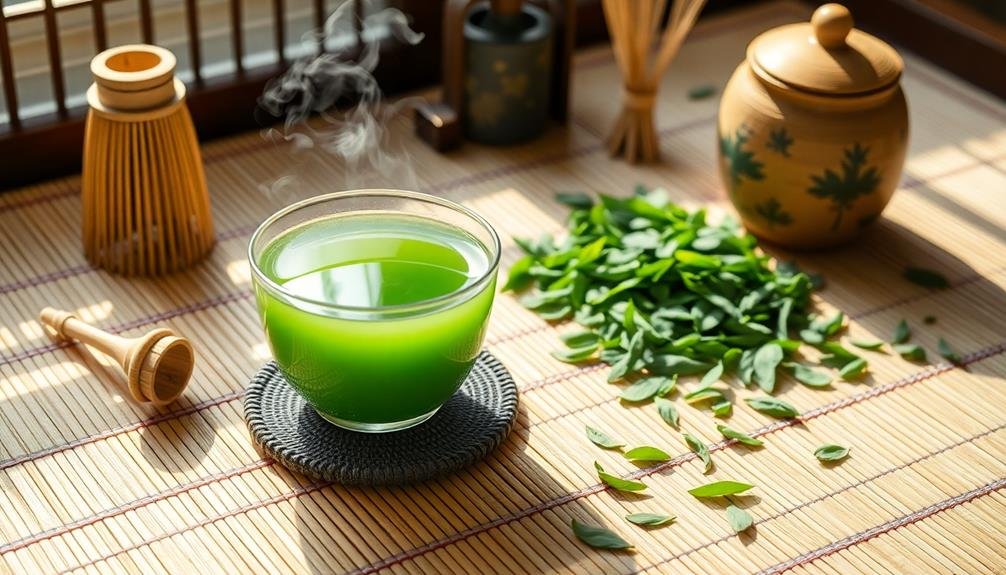
Sencha stands as the backbone of Japanese tea culture, occupying a central role in both daily life and tea ceremonies. You'll find this green tea variety in homes, offices, and traditional tea houses across Japan. Unlike Gyokuro, Sencha isn't shade-grown, resulting in a brighter, more vegetal flavor profile.
When preparing Sencha for a tea ceremony, you'll use water that's slightly cooler than boiling, typically around 70-80°C. This temperature preserves the tea's delicate flavors and prevents bitterness. You'll steep the leaves for about one minute, producing a golden-green liquor with a revitalizing aroma.
Sencha's taste is characterized by a balance of umami, sweetness, and astringency. You'll notice hints of seaweed, grass, and a subtle nuttiness. As you sip, you'll experience a clean, crisp mouthfeel that's both invigorating and calming.
In tea ceremonies, Sencha is often served with light sweets to complement its flavor. You'll appreciate how this everyday tea transforms into a ceremonial art, showcasing the beauty in simplicity and the depth of Japanese tea culture.
Frequently Asked Questions
How Long Does a Traditional Japanese Tea Ceremony Typically Last?
You'll find that a traditional Japanese tea ceremony can last anywhere from 20 minutes to several hours. It depends on the type of ceremony and the host's intentions. You'll experience a deliberate, unhurried pace throughout the ritual.
What Are the Proper Etiquette Rules for Guests During a Tea Ceremony?
You'll need to follow strict etiquette during a tea ceremony. Bow when entering, sit properly, admire the utensils, accept treats with gratitude, and drink tea respectfully. Don't rush, and always show appreciation for the host's efforts.
Can Beginners Participate in Authentic Japanese Tea Ceremonies?
You can participate in authentic Japanese tea ceremonies as a beginner. Many venues offer introductory sessions for newcomers. You'll learn basic etiquette and procedures, allowing you to experience this cultural tradition without extensive knowledge or training.
Are There Seasonal Variations in the Herbs Used for Tea Ceremonies?
Yes, you'll notice seasonal variations in tea ceremony herbs. You'll experience different flavors and aromas throughout the year. Spring might bring fresh, floral notes, while autumn offers earthy tones. It's an ever-changing sensory journey.
What Is the Significance of the Tea Room's Design in Ceremonies?
You'll find the tea room's design essential to the ceremony. It's intentionally simple and minimalist, creating a tranquil atmosphere. The room's layout, decorations, and even the entrance are carefully planned to enhance the ceremony's spiritual experience.
In Summary
You've now discovered the three key herbs at the heart of Japanese tea ceremonies. Whether you're sipping the vibrant matcha, savoring the delicate gyokuro, or enjoying the versatile sencha, you're participating in a rich cultural tradition. Each herb offers its unique flavors and rituals, inviting you to slow down and appreciate the moment. As you explore these teas, you'll deepen your connection to Japan's tea culture and find new ways to bring mindfulness into your daily life.

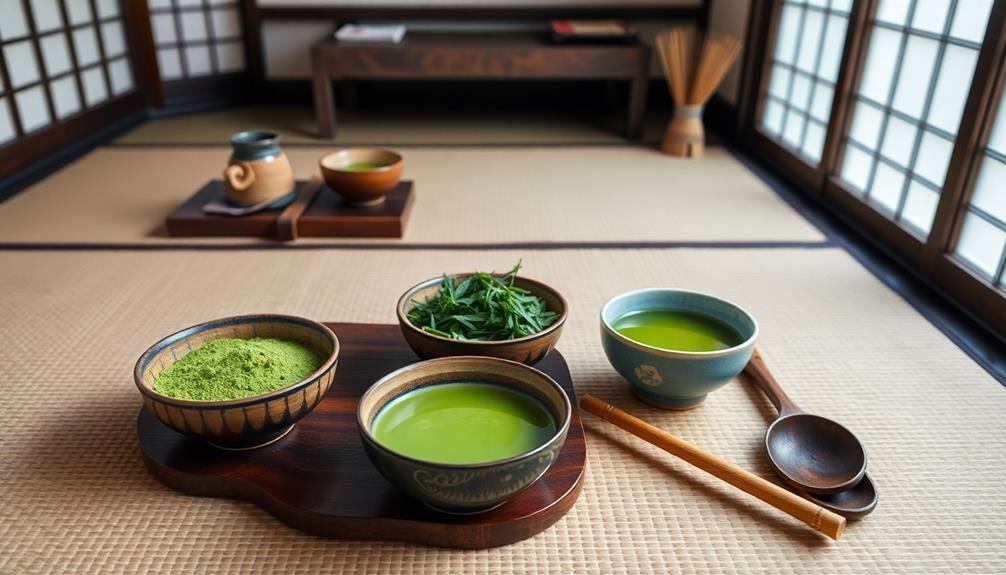
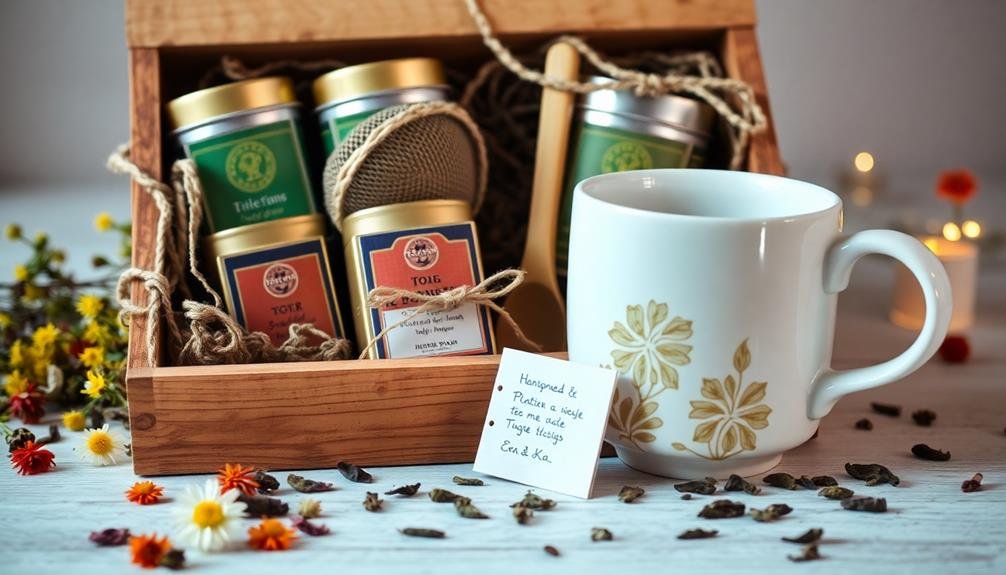
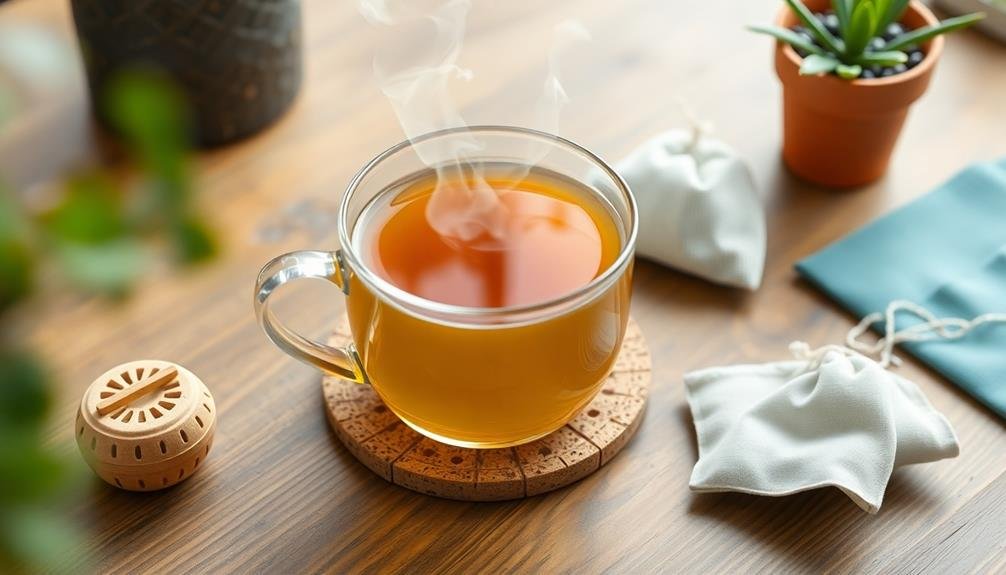
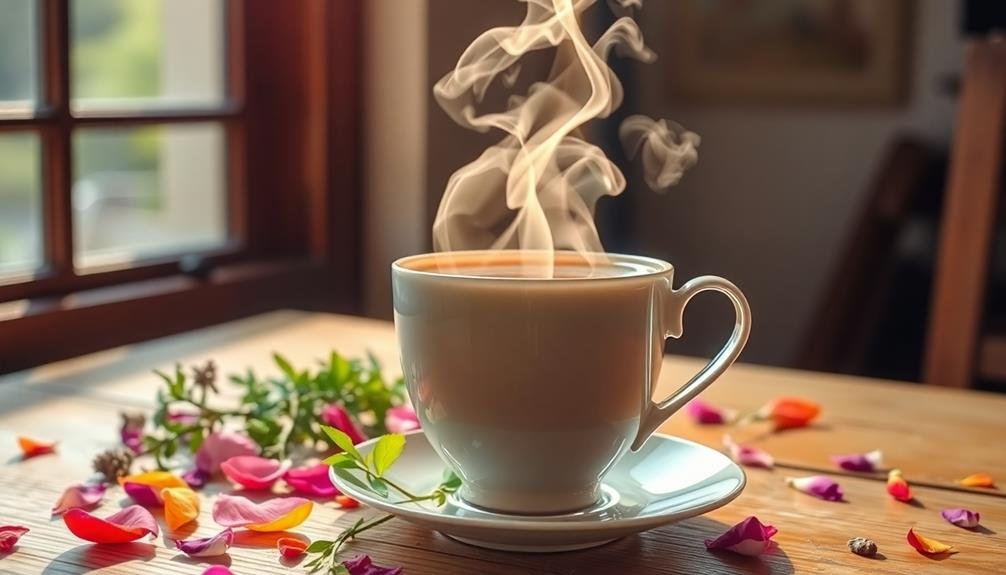
Leave a Reply